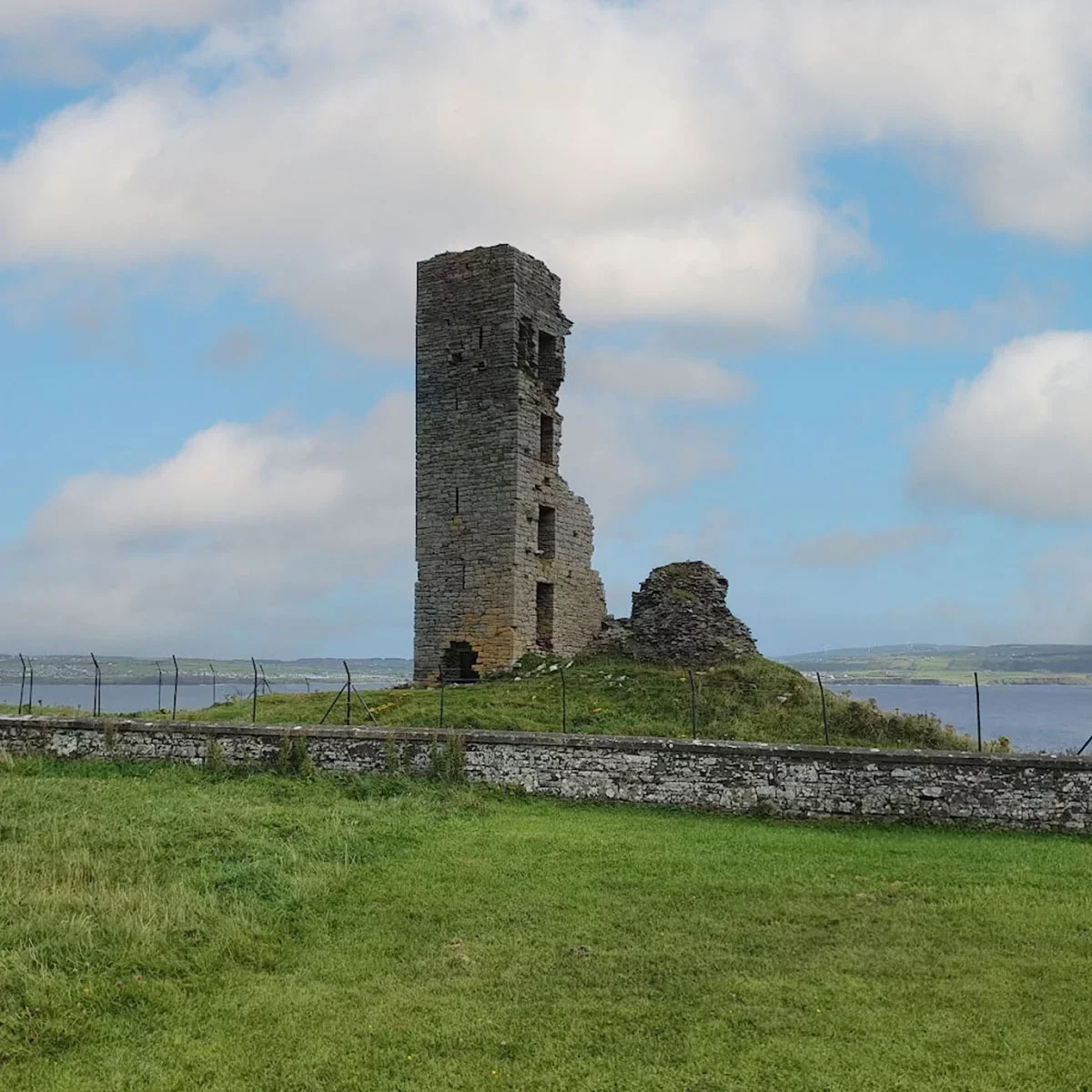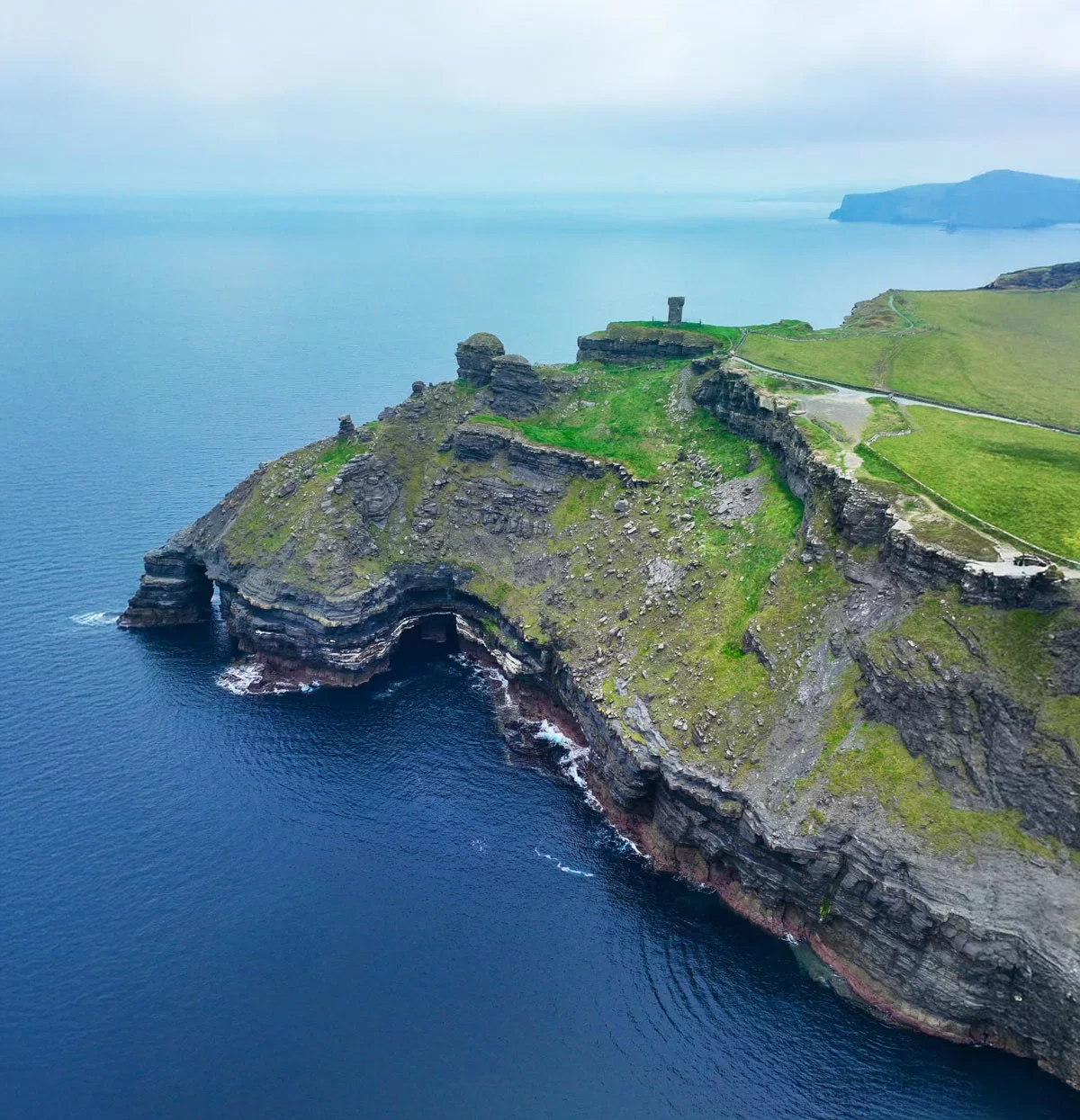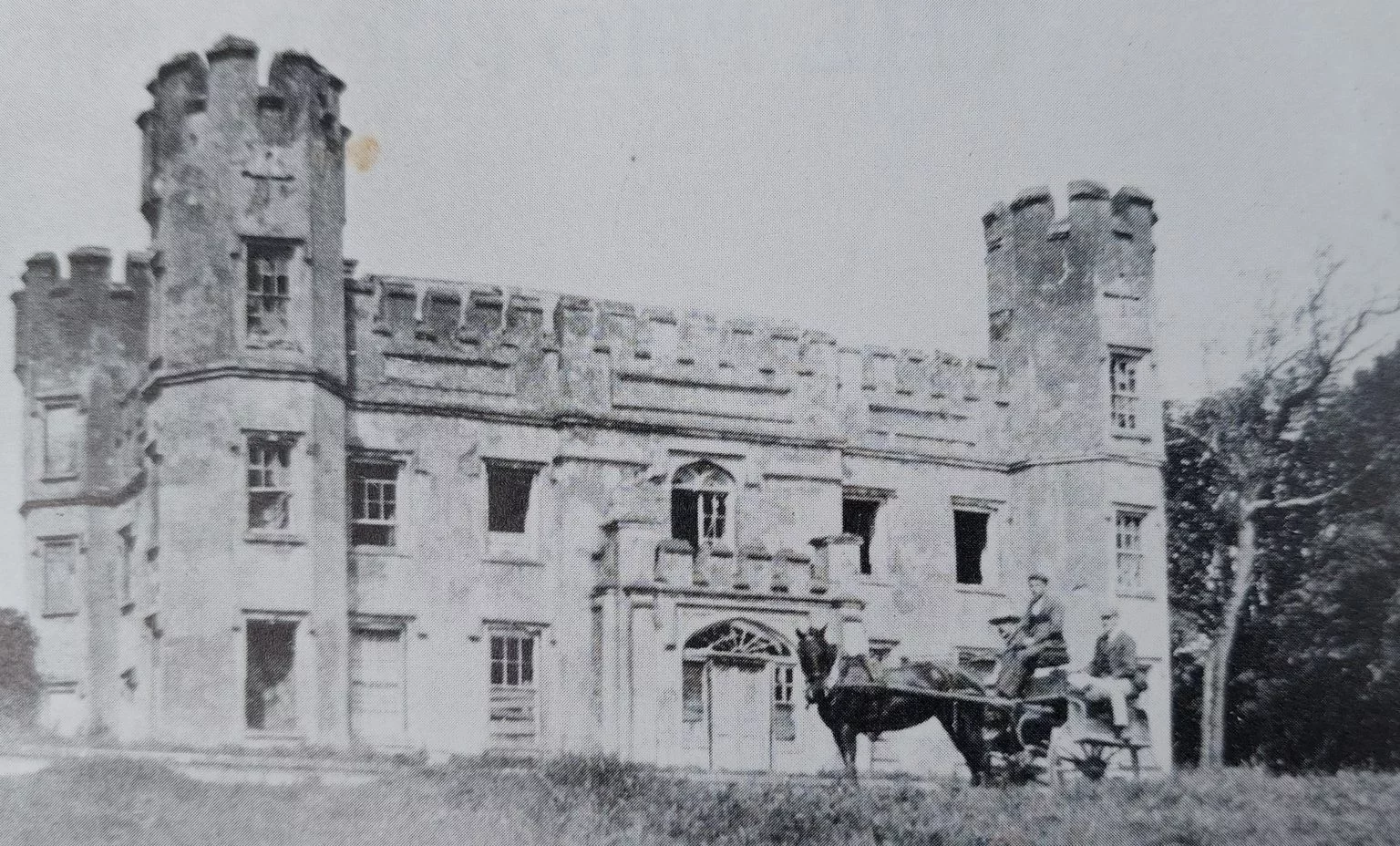Liscannor Castle Ruins - Stronghold of Stone and Shadow

At the eastern end of Liscannor village, half-hidden behind ivy and hedgerows, stands the broken tower of Liscannor Castle. Though weathered by centuries of Atlantic storms, its silhouette still rises defiantly above the rooftops, a reminder that this quiet coastal village was once the seat of power and conflict.
The O’Connors and O’Briens
The castle was built in the 16th century, during a time when Clare’s lands were divided among warring Gaelic clans. The O’Connor family held Liscannor and the fertile lands surrounding the bay. They were a branch of the mighty O’Connors of Connacht, descended from kings, and here they built their tower house — a six-storey stronghold that dominated the village below.
But power in Clare was never uncontested. The O’Briens, lords of Thomond and heirs of Brian Boru, cast their influence over much of the region. By the late 1500s, Liscannor Castle came under O’Brien control, its walls bearing witness to feuds, shifting alliances, and the pressure of English rule pressing ever westward.
A house of many lives
Like other Irish tower houses, Liscannor Castle was not just a fortress but a home. Picture it in its prime: a narrow spiral staircase winding upward through thick stone walls; vaulted chambers filled with tapestries, peat fires, and the sound of harp or fiddle; narrow arrow-slits looking out over Liscannor Bay, ready to defend against raiders. Outside, cattle grazed in the fields, fishermen worked in the harbour, and the castle tower kept watch over them all.
The six-storey stair tower that still stands today would once have led to a battlemented roof, where guards scanned the horizon for danger. It was a world of watchfulness — of alliances sealed by marriage, rivalries simmering, and the constant negotiation of power between Gaelic lords and encroaching English rule.
Decline and ruin
By the 17th century, the world of the Gaelic chiefs was crumbling. The Tudor conquest of Ireland, Cromwell’s campaigns, and shifting land ownership stripped the old families of much of their power. Liscannor Castle, like so many tower houses across Ireland, was abandoned to time and weather. The roof fell in, walls cracked, ivy claimed the stone. The O’Connors and O’Briens moved into history books, leaving behind a ruin that villagers passed each day as they went about their lives.
Yet ruins in Ireland are never silent. They continue to tell their stories in stone. Children played among the broken walls, lovers carved initials into the ivy, locals used the castle as a landmark to tell directions — “turn at the tower.” Its silhouette became part of Liscannor’s identity: a reminder that beneath the modern village beats a medieval heart.
Why it matters
Today, the ivy-clad ruin of Liscannor Castle stands as a romantic fragment of the past. At dusk, when the last light catches the stone and the Atlantic winds sweep through the empty windows, you can almost hear echoes of footsteps on the stair and voices in the great hall. It is a place where history feels close — not preserved behind glass, but breathing in the open air.
For Liscannor, the castle is both a ruin and a symbol: of resilience, of heritage, of stories still anchored in stone. Visitors who stop to gaze at its weathered tower are not just looking at rubble, but at the remains of a world of chieftains, feuds, and the proud families who once ruled here at the edge of the sea.
Other Heritage sites

Hag’s Head & the Moher Signal Tower - A Story Told by Stone
At the southern end of the Cliffs of Moher lies Hag’s Head, a rugged headland where land gives way to legend. Named for the profile of the witch Mal, whose tragic story is etched into the stone, this is a place of many layers. It was once a prehistoric clifftop fortress and later the site of a Napoleonic-era signal tower, which still stands against the sky. Today, a walk here reveals not only these echoes of the past but also one of the most breathtaking views of the entire cliff coastline.

Birchfield House — The O’Briens’ Country Seat
Built in the late 18th century, Birchfield House was a Georgian country residence of the O’Brien family, once at the centre of estate life near Liscannor. Its balanced façade, sash windows, and surrounding demesne reflected the refinement of Ireland’s “Big House” era, even as its prosperity rested on the rents and labour of local tenants. Though time has softened its grandeur, Birchfield endures as a vivid reminder of landlord power, family legacy, and the shifting fortunes of rural Clare.
Ready to Explore Liscannor?
Questions? Need directions or recommendations? We’re here to help you make the most of your time in Liscannor.